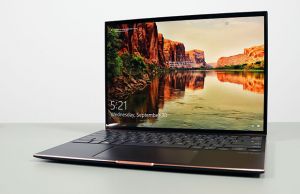IntelUser2000
Elite Member
- Oct 14, 2003
- 8,686
- 3,787
- 136
According to JZWSVIC there is a 8.5% Firstrike difference between 1R and 2R DDR4-3200, this is in line with previous generation AMD iGPUs or Iris Pro 580, Intel recommended dualrank (DDR3) a few years ago and claimed a double digits gain in real games for Iris Pro 580. It's not only about the ranks, it's also about LPDDR4 vs DDR4.
Iris Pro 580 wasn't bound by bandwidth at all.
AnandTech Forums: Technology, Hardware, Software, and Deals
Seeking answers? Join the AnandTech community: where nearly half-a-million members share solutions and discuss the latest tech.
Yea, and the difference in bandwidth between LPDDR4x and DDR4 is only 33%.
Maybe in some 3DMark tests it affects it that much for some reason.
Also if it requires all that to perform like it did in Intel presentations(and even that was below expectations), then even the supposedly most impressive part of Tigerlake is a bore. It takes a mismatch in mere 1-2 configuration details to go from 30% faster to suddenly on par with Renoir, and only about 30-40% better than Icelake.
All that available with higher cost, much worse driver support, more power used, 7 months behind release and to top it off a CPU with half the amount of cores to boot! Their laptop division looks as hopeless as the server and desktop division.








